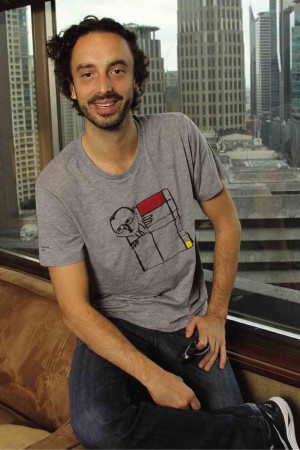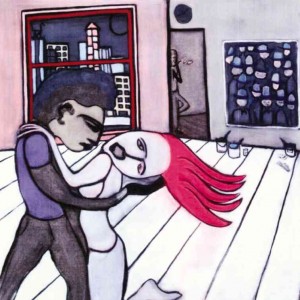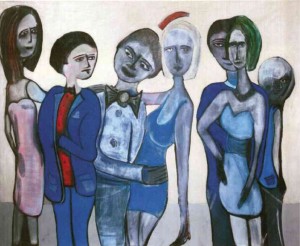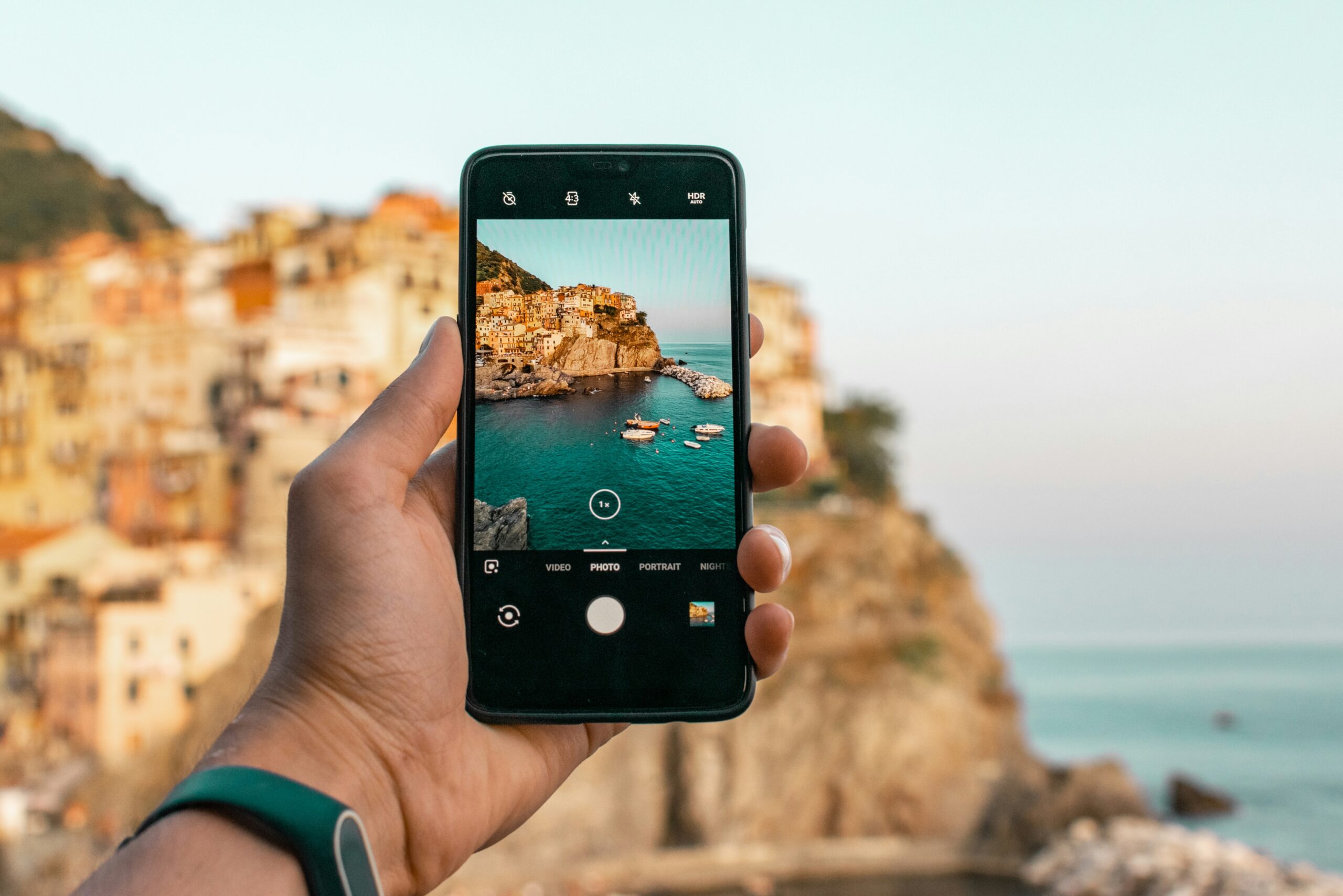Editor’s note: The exhibit has been reset to May.

Defiant at heart, artist Alexander Charriol has sought to establish his own identity outside of his family.
Posing for the Inquirer, he removed his anorak and wristwatch that bore the family brand name. His father Philippe Charriol, a sportsman and entrepreneur, created luxury watches, jewelry and lifestyle products. The younger Charriol preferred to give an artsy T-shirt, which he designed, to the press. Charriol pleaded not to discuss family.
“My last name says enough of who I am,” he said.
Charriol visited the Philippines recently to promote his touring exhibit, “Human Flow” which opens today at the Ayala Museum. “Through my adventures, I’ve realized that you go through life alone but you search for connections. You can never be alone because of the need to connect. This show is all about connection, the fiber of being human, the connection of touching and communicative endeavor we need to find in life. You cannot go through life without connecting or being connected with something,” he said.
At 34, Charriol said he’s accumulated enough “database of memory” to learn from his experiences and to inspire his art.
“When I was 20, I wished to be 30. When I was 30, I wished to be 20 again so I could redo it,” he said with a chuckle. “I would have taken a little more seriousness. I’ve made bad decisions—drugs, alcohol. I went down the wrong path for a while but got back on the right path. I could have done without those. But no regrets. I had fun.”
How did he pick himself up?
“Dead ends aren’t fun so I had to wait for a new direction. Now I don’t drink, don’t smoke, don’t eat sugar, don’t eat wheat. I’m super healthy,” he declared.
Going crazy

Charriol spoke enigmatically about his life. The Frenchman was born in Hawaii, raised in Hong Kong and London. A Filipino couple, who worked for the Charriols, took care of him for 25 years.
“I’m almost Filipino. That’s why I’m showing at the Ayala Museum. There were no white artists who were doing solo exhibits there except me,” he said.
Charriol admitted to having a rebellious streak while growing up.
“People would yell at me all the time. I would get in trouble because I never did it the proper way. I don’t like to stand in line. Any line I see, I try to cut. I guess that’s how I take life. I don’t like to take to convention where I’m told to be what I cannot be. Maybe that’s just being spoiled or I’m just looking at things not the same way as other people look at them,” he said.
He went into art by accident. While the family was having a vacation in an American ski resort, Charriol, then 17, came across a toy store. It displayed a wad of paper inscribed with “Alex’s Pad” and colors next to it. “It had my name so I bought it to kill some time. I haven’t stopped since.”
Growing up, Charriol admitted that in his struggle to find his identity, he found expression in painting: “Painting was right there.”
He honed his craft at the Boston Museum of Fine Arts and the Parsons School of Design in New York.

Asked what he did in New York, Charriol replied: “Going crazy. I should have been studying but I was having a good ol’ day.”
After his bout with substance abuse, he took a hard look at himself.
“I had time to investigate and find out more of who I am. I don’t think people do enough search on themselves. They rely so much on exterior stimulation—TV, phone. Being an artist is a continual search of who you are and what you want to believe in,” he said.
He likened the end of his dark period to that of finishing a painting. “Just knowing your limits is your big thing. That goes into painting as well—knowing when to push or to stop.”
Bleeding heart
Although Charriol works from his studios in Hong Kong and Bangkok, the artworks explore the irony of isolation in human relationships in the West. He shared his insights of works that will be shown in the Philippines.
“Tin Man Party” depicts three couples who, despite their arms around each other, show emptiness and daze in their faces.
“This is from one of my old days in New York. ‘Tin Man Party’ translates to a soul-less party. The Tin Man didn’t have a soul, as was this party. Everyone did drugs and drinking. Nobody cared about anybody else but themselves. It was a heartless party. It’s one of the regrets I have—going to these soulless places to have fun,” he said.
In “Love is Blood,” a man is about to bite a woman’s neck. Although her face showed resistance, her body was embracing the man. Meanwhile a voyeur from a door and a painting of faces in the background were observing the scenario.
“She looks like she wants to get bitten, but doesn’t. The yes-no-yes-no scenario. In New York, you are voyeuristic. Everyone lives on top of each other and there are windows in front of each other. These cities are so packed. So the voyeuristic feel is mysterious and scary. But that is the excitement.”
One of Charriol’s dramatic pieces is “Bleeding Hearts,” which is made of bunched plastic flowers painted in white, dipped in red paint and hanging from a pulley. They are suspended on a pulley to be dropped in a bucket of blood.
Looking back, Charriol realized that it symbolized his hurts.
Subconsciously, he has been searching to establish a link with God. But “Closer to God” is a daunting piece that reveals the struggle to connect with the One. Standing on a piece of grass and flowers, a white ladder, covered in plaster, is wrapped with barbed wire. A light bulb hangs near the top of the ladder.
“God is Light. He’s so close to you. The light is barely touching the ladder. You get to climb up to God, but you can’t,” he explained.
He is peaceful when his painting becomes a meditative process. “I let go of my body and do not think. The key is to relax, free your mind, and don’t hold back. If you’re not thinking, your hands will flow.”
All told, Charriol hopes that “Human Flow” will get this message across: “Stay connected. In this world, it’s so easy to disconnect and lose that sense of touch. Everyone is on their phones. I’m friends with someone [in social media] whom I’ve never met. We need to stay connected and still be human.”










































